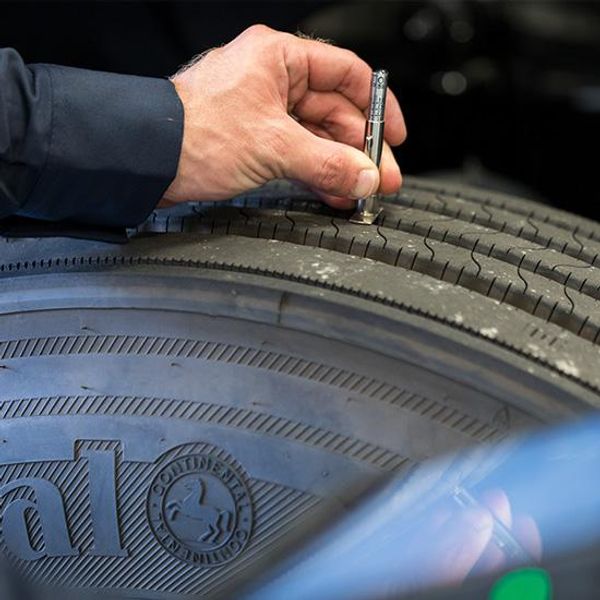The Importance of Tire Safety

Tire Maintenance
Mike Hasinec, former vice president of maintenance for Penske Truck Leasing, said it is important for drivers nationwide to examine tires on every pre- and post-trip inspection. In addition, Penske Truck Leasing requires maintenance technicians to check tire pressures before a vehicle leaves a maintenance facility.
“The correct tire pressure helps ensure a long tire life, maximizes fuel economy and improves safety," Hasinec said, adding that checking and adjusting the tire inflation pressure with an accurate tire pressure gauge is critical. “Tire pressure gauges should be checked periodically for accuracy and calibrated as per the gauge manufacturer guidelines."
When air pressures are inaccurate, the tire flexes in ways it wasn't designed to, changing the shape of the tire's footprint, resulting in decreased fuel economy, irregular wear patterns and reduced tread life.
What's more, tire failures are always the most frequent type of roadside breakdowns, and properly maintaining tires can help prevent problems before they occur.
Tire performance and tire pressure can be climate and temperature sensitive. For example, in cold climates, air pressure drops. Running on underinflated tires is a concern as it makes tires build up excessive heat, potentially causing premature failure, so drivers and maintenance technicians should add air. “When you don't have a tire properly inflated, that tire's temperature increases drastically," he said.
However, as temperatures increase, so will the pressure, leading to the risk that tires could become overinflated as the thermometer rises. This can mean drivers traveling from cooler climates to warmer climates may need to pay extra attention to air pressures.
Also, the tread portion of the tire becomes softer in warm climates, making them more susceptible to punctures from road debris, such as metal objects, screws and nails. “When you get to Phoenix, Las Vegas or places where it is very hot, you can get temperatures on the asphalt of 140 degrees," Hasinec said.
Spec'ing the Right Tire
Tire safety can start with selecting the right tire for the application, operating environment and organizational goals, such as improving fuel efficiency. For example, wide-based singles weigh less and are slightly more fuel efficient, but today's dual tires are nearly as fuel efficient and can provide more traction, which may be important in areas with severe winter weather.
In addition, private fleets involved in long-haul, over-the-road operations may benefit from a completely different tire than a fleet operating in an urban environment.
For example, long-haul private fleets can spec drive tires that come with more 32nds of rubber as well as SmartWay-designated rubber compounds. “This gives them the best of both worlds – longer tire life and better fuel economy," Hasinec said.
Regional/local operations need tires with a harder rubber compound since they will experience more tire scrubbing than a long-haul operation. This is driven by more stopping, starting and turning.
“Those in a warmer climate and with all on-road operations can consider a different tread design for the drive tire, such as a straight rib pattern," Hasinec said. “Whereas fleets that operate in regions that have inclement weather and those that operate off-road will want a drive tire with a lug pattern for traction purposes."
Penske Truck Leasing's experts can review each fleet's individual needs and priorities to help find the right vehicle and tire spec.